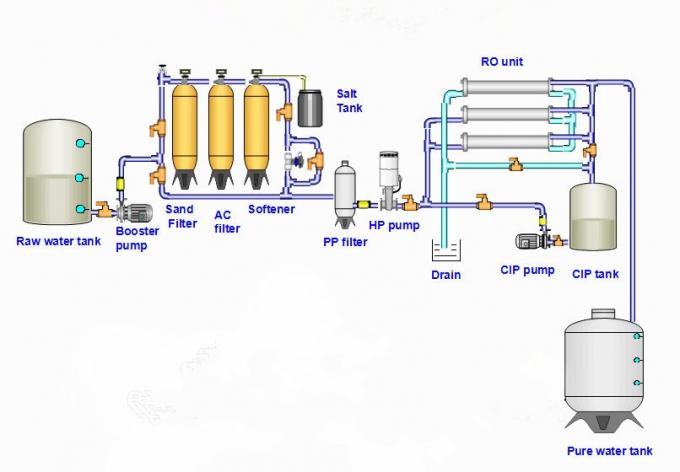Abstract:
Nitrate is a stable and highly soluble ion with a low potential for precipitation or adsorption, nitrate is seldom present in geological formations and therefore contamination due to nitrate is mainly attributed to anthropogenic sources.
Pollution of water resources by nitrate occurs due to many reasons which has effects on environment and human health so nitrate removal from drinking water is necessary.
In this research nitrate removal is attempted by addition of sodium thiosulfate, 72% reduction in nitrate level was noticed when 1ml of 1.09% solution of sodium thiosulfate after 30 minutes of contact time. Literature was reviewed to determine the effect of sodium thiosulfate on human health.
Key Words: Nitrate removal, sodium thiosulfate, health effect.
- Introduction:
Nitrate is seldom present in geological formations and therefore contamination due to nitrate is mainly attributed to anthropogenic sources such as sewages and fertilizers. Microbial nitrification is the natural origin of nitrate. Through this process, ammonia is converted into nitrite and then nitrite to nitrate by the nitrosomonas genus and nitrobacter genus bacteria, respectively (Sajil Kumar et al.2014). Since nitrate has more stable oxidation state than nitrite, it is less absorbed by the aquifer matrix. Due to its mobility, it can travel long distances and pollute the groundwater easily (Assaf and Saadeh 2009, Sajil Kumar et al.2014).
Pollution of water resources by nitrate occurs due to industrial wastewater containing nitrate, domestic wastewater, fertilizers in agricultural, discharges from animal operations, wastewater treatment facilities, septic systems and commercial activities (Majlesi etal, 2016). Other sources include, atmospheric deposition and spreading of sewage sludge to land and seepage from landfills (Wakida and Lerner, 2005, E. Pastén-Zapata et al.2014).
The main factors that affect the potential for nitrate contamination of groundwater include land use practices, well depth, and soil type. Nitrate concentrations in groundwater can change over months and years due to changes in land use such as increased agricultural activities, deforestation, and installation of septic systems (Selecky et al, 2005). Groundwater concentrations exceeding an arbitrary threshold of 3 mg/l may be indicative of contamination of natural groundwater as a result of human activities (Burkart and Kolpin, 1993, E. Pastén-Zapata et al.2014).
A variety of analytical techniques and sensory methods have been employed to detect and identify the source of nitrate contamination. Techniques like voltammetry, Spectroscopy, Ion selective electrodes etc. are used extensively in the water quality assessment (Breijo, Sanchez, Civera, Ferrando, & Prats-Boluda, 2002; Buehler, Kounaves, Martin, West, Kuhlman, 2001, & Kumar Gaurav et al.2015).
Both nitrate and nitrite are significant public health concerns since they can cause methemoglobinemia or “blue-baby syndrome.” Nitrite interferes with the ability of infant hemoglobin to carry oxygen. Left untreated, this condition may lead to brain damage and death (Fan and Steinberg, 1996, Selecky et al, 2005). Excess levels of nitrate effects on health by forming hypertension, thyroid disability and carcinogenicity hazard of nitrosamine (Majlesi et al.2016), also can cause gastric cancer (Mason, 2002), meningitis, Parkinson’s disease etc. (Moorcroft, Davis, Compton, 2001 &Kumar Gaurav et al.2015). Studies on animals in the laboratory have not indicated that nitrate or nitrite is directly carcinogenic, but it may react in the stomach with food containing secondary amines to produce N-nitroso compounds (NOC) which are known to be carcinogenic in animals (LWRRDC 1999, Ward et al. 2005, and Sajil Kumar et al.2014).
Elevated concentrations of nitrate in groundwater represent environmental health risks, nitrate export into adjacent surface water bodies may induce an increased level of nutrients (eutrophication) affecting adversely biodiversity, mammals, birds, and fish population by producing toxins and reducing oxygen levels (Environmental Agency, EA, 2005) and can cause poisoning in animals (Stadler, 2012) . Besides, denitrification processes contribute to the emission of greenhouse gases due to production of N2O (Haag and Kaupenjohann, 2001, E. Pastén-Zapata et al.2014).
Nitrate is a stable and highly soluble ion with a low potential for precipitation or adsorption. These properties make it difficult to remove from water using conventional processes such as filtration or activated carbon adsorption. As a result, more complex treatment processes must be considered. These treatment processes– ion exchange, reverse osmosis, electrodialysis, and biological denitrification (Selecky et al, 2005), catalytic denitrification, hybrid systems based on fly ash adsorption, membrane filtration, and electrocoagulation (Majlesi et al. 2016).
Chemical denitrification can be accomplished with reduction of nitrate by metals. Various metals have been investigated for use in nitrate reduction including aluminum and iron (both Feo and Fe2+).The advantage of chemical denitrification over the removal technologies is that nitrate is converted to other nitrogen species rather than simply displaced to a concentrated waste stream that requires disposal. Problems with chemical denitrification of potable water are the reduction of nitrate beyond nitrogen gas to ammonia, partial denitrification, and insufficient nitrate removal (nitrite can be converted to nitrate with the use of chlorine in disinfection). No full-scale chemical denitrification systems have been installed in the United States for the removal of nitrate in potable water treatment. A significant body of research has explored the use of zero valent iron (ZVI) in denitrification. Several patented granular media options are also emerging, including SMI-III® (Sulfur Modified Iron), MicroNose™ Technology, and Cleanit®-LC.( Darby etal,2012).
The hydrogenation via catalytic method is one of the promising techniques for removal of nitrate from water. It needs very active catalysts because the reaction is performed preferably at an ambient/low temperature, the reaction scheme shows that nitrate is reduced to the desired products involving NO2 -, NO, N2O and N2. The undesired byproduct NH4 is also formed by a side reaction due to over hydrogenation (Sharma& Bhattacharya, 2016).
The aim of this research is to investigate the potential of removing nitrate from drinking water using sodium thiosulfate and its impact on human health.
- Methodology:-
1.09% solution of sodium thiosulfate was prepared by dissolving pills (taken from Hach vials) in 100 ml of deionized water. Different doses of sodium thiosulfate solution (0.1, 0.3, 0.5,1,2,3, and 5ml) were added to 100 ml of water to be treated to determine the lowest dose that give high percentage of nitrate removal. The lowest contact time was determined by adding the lowest dose that gives high percentage of nitrate removal. Nitrate level was determined by cadmium reduction method (Hach method no. 8039) using nitraVer 5 high range powder pillow nitrate reagent. The effect of adding sodium thiosulfate on the level of TDS, alkalinity, sulphate and total hardness was studied after one hour contact time. TDS was determined by Hach CO 150 conductivity meter. Alkalinity was determined by Hach method no. 8203(phenolphthalein and total method). Sulfate was determined by Hach method no. 8051. Total hardness was determined by Hach test kit 20-400 mg/l Model 5-EPMG-L Cat. No.1454-01. Literature was reviewed to determine the effect of sodium thiosulfate on human health.
- Results & Discussion:-
Sodium thiosulphate (Na2S2O3, STS) is an industrial compound which is typically available as the pentahydrate, Na2S2O3.5H2O. It has medical uses in the treatment of some rare medical conditions. These include calciphylaxis in hemodialysis patients with end-stage kidney disease as well as cyanide poisoning. It also has functions as a preservative in table salt (less than 0.1 %) and alcoholic beverages (less than 0.0005 %)( Lee et al 2016).
Table 1 shows the effect of adding different doses of sodium thiosulfate on different parameters of raw water. You can notice that there is increase in the level of electrical conductivity and total dissolved substances by increasing the dose of 1.09% solution of sodium thiosulfate, but there is decrease in the level of nitrate.
Table 1 The effect of adding different doses of sodium thiosulfate on different parameters of raw water.
|
Sodium Thiosulfate dose |
0 | 0.1 | 0.3 | 0.5 | 1 | 2 | 3 | 5 |
|
Nitrate |
41.5 | 41 | 31 | 20.5 | 11.5 | 10 | 2.2 | 1.5 |
|
pH |
7.18 | 8.04 | 8.00 | 7.99 | 7.94 | 8.08 | 7.76 | 7.85 |
| Turbidity | 0.33 | 0.17 | 0.21 | 0.26 | 0.27 | 0.23 | 0.17 |
0.34 |
| EC | 925 | 931 | 954 | 989 | 1056 | 1209 | 1346 |
1611 |
| TDS | 427 | 437 | 448 | 465 | 497 | 572 | 639 |
767 |
Table 2 shows the percentage of reduction in nitrate level and percentage increase in EC and TDS level at different doses of 1.09 % of sodium thiosulfate solution. 72% reduction in nitrate level was noticed when 1 ml of 1.09% solution of sodium thiosulfate while the level of EC and TDS still in the acceptable level in drinking water. The lowest dose of sodium thiosulfate that gives high percentage of nitrate removal (72%) and lower increase in TDS (16%, the level of TDS still below 500 mg/l) was 1 ml of 1.09% solution (table 2).
Table 2 The percentage of reduction in nitrate level and percentage increase in EC and TDS level at different doses of 1.09 % of sodium thiosulfate solution.
|
Sodium Thiosulfate dose |
0.1 | 0.3 | 0.5 | 1 | 2 | 3 | 5 |
|
% Reduction in nitrate concentration |
1% | 25% | 51% | 72% | 76% | 95% | 96% |
| % increase in EC | 0.6% | 3% | 7% | 14% | 31% | 45% |
74% |
| % increase in TDS | 2% | 9% | 9% | 16% | 34% | 50% |
80% |
Table 3 shows the effect of contact time on the percentage of removal of nitrate by sodium thiosulfate. More than two third of nitrate level was removed after 30 minutes of contact time between sodium thiosulfate and raw water.
Table 3 The effect of contact time on the percentage of removal of nitrate by sodium thiosulfate.
|
Time |
% of nitrate removal |
|
10 minutes |
56% |
| 30 minutes |
69% |
| 60 minutes |
94% |
Table 4 shows the effect of 1 ml of 1.09% solution of sodium thiosulfate addition to raw water on the level of total hardness, alkalinity, and sulfate after one hour of contact time.
Table 4 The effect of 1 ml of 1.09% solution of sodium thiosulfate addition on different parameters of raw water.
|
Test |
Before addition | After addition |
|
Total Hardness |
490 | 500 |
| Sulfate | 53 |
56 |
| Alkalinity | 259 |
235 |
3.1 sodium thiosulfate health effect:
Sodium thiosulfate (STS) is an industrial chemical which has also been approved for the treatment of certain rare medical conditions. These include cyanide poisoning and calciphylaxis in hemodialysis patients with end-stage kidney disease (Lee et al. 2016).
Sodium thiosulfate used as therapeutic drug for treatment of cyanide poisoning at a dose of 1ml/hr/kg of 10% solution at a total dose of 12g (Zakharov et al 2015), treatment of nephrogenic systemic fibrosis (Yerram et al,2007) at a dose of 12.5 g three times a week for three months .
Concurrent injections of sodium thiosulfate intraperitoneally or intravenously at a dose of 400 mg/kg once weekly for 3 consecutive weeks prevented the hypomagnesemic and the nephrotoxic effects of cisplatin and can be of clinical significance( Wong et al, 1988).
Compared with saline control solution, sodium thiosulfate alone also inhibited tumor growth significantly (p < .005)( Viallet et al 2005).
The development of embryos exposed to 0.1~1 mol/L STS was severely retarded and was accompanied by malformation of multiple organs; embryos exposed to 10 micromol/L~10 mmol/L STS had circulatory, nervous and maxillofacial malformations (Hu et al, 2009). Pioneering studies suggest that chemicals can have in many cases very similar toxicological and teratological effects in zebrafish embryos and humans (Yang et al 2009).
3.2 Sodium Nitrate health effect:
Larsen et al. tested for the first time in a double-blind crossover study the effects of sodium nitrate on blood pressure(BP) in healthy volunteers and reported a significant reduction in diastolic BP (23.7 mm Hg), The BP-lowering effects of inorganic nitrate may derive from increased generation of nitric oxide (NO) , a pleiotropic molecule involved in the vasodilation of large arteries and resistance vessels, The endothelial isoform of the NO synthase uses arginine and molecular oxygen as precursors to tonically release NO in the endothelium, which is important for the control of vascular tone, smooth muscle growth, platelet aggregation, and inflammation . Reduced NO bioavailability has been associated with impairment of endothelial function and increased risk of hypertension and cardiovascular diseases (Mario Siervo et al, 2013).
Numerous studies now show that administration of nitrate or nitrite has NO-like bioactivity in animals and humans including a reduction of blood pressure, protection against ischemia–reperfusion injury, and modulation of mitochondrial function. Nitrate supplementation, either as a sodium salt(NaNO3) or as a natural resource (e.g. beetroot juice), reduces the oxygen cost of exercise (Larsen et al. 2007,2010, 2011; Bailey et al. 2009, 2010; Vanhatalo et al. 2010;Lansley et al. 2011b; Cemak et al. 2012), and enhances exercise p performance (Bailey et al. 2010; Lansley et al.2011a; Cemak et al. 2012)( Her n´andez etal 2012).
Conclusions:
Removal of nitrate from drinking water by adding 1.09 % of sodium thiosulfate is easy, cost effective method and remove high percentage of nitrate.
Further research is needed to confirm that addition of sodium thiosulfate to drinking water is safe process.
Further studies are needed to know the chemical compounds produced from reaction between sodium thiosulfate and nitrate.
By
Adel Alsalaymeh,
Water Quality Laboratory, Hebron Municipality, Hebron – Palestine.
References:
- Kumar Gaurava, Pooja Devib, BabanKumar S. Bansodb, Study of Effect of Interferent in the Determination of Nitrate in Water, Aquatic Procedia 4 ( 2015 ) 1094 – 1098.
- Mary Selecky, Janice Adair & Denise Clifford, Nitrate Treatment Alternatives for Small Water Systems,
- Jensen, V.B., Darby, J.L., Seidel, C. & Gorman, C. (2012) Drinking Water Treatment for Nitrate. Technical Report 6 in: Addressing Nitrate in California’s Drinking Water with a Focus on Tulare Lake Basin and Salinas Valley Groundwater. Report for the State Water Resources Control Board Report to the Legislature. Center for Watershed Sciences, University of California, Davis.
- Monireh Majlesi , Seyed Mohsen Mohseny , Mahdieh Sardar , Sohrab Golmohammadi , Amir Sheikhmohammadi , Improvement of aqueous nitrate removal by using continuous electrocoagulation/electroflotation unit with vertical monopolar electrodes, Sustainable Environment Research 26 (2016) 287-290.
- Ernesto Pastén-Zapata , Rogelio Ledesma-Ruiz , Thomas Harter , Aldo I. Ramírez , Jürgen Mahlknecht , Assessment of sources and fate of nitrate in shallow groundwater of an agricultural area by using a multi-tracer approach, Science of the Total Environment 470–471 (2014) 855–864.
- Sharma, A. Bhattacharya(2016), Drinking water contamination and treatment techniques, Appl Water Sci, DOI 10.1007/s13201-016-0455-7.
- J. Sajil Kumar, P. Jegathambal , E. J. James, Chemometric evaluation of nitrate contamination in the groundwater of a hard rock area in Dharapuram, south India, Appl Water Sci (2014) 4:397–405, DOI 10.1007/s13201-014-0155-0.
- Mario Siervo,* Jose Lara, Ikponmwonsa Ogbonmwan, and John C. Mathers(2013), Inorganic Nitrate and Beetroot Juice Supplementation Reduces Blood Pressure in Adults: A Systematic Review and Meta-Analysis, The Journal of Nutrition Nutrition and Disease, doi:10.3945/jn.112.170233.
- Andr´es Her n´andez, Tomas A. Schiffer, Niklas Ivarsson, Arthur J. Cheng, Joseph D. Bruton,Jon O. Lundberg, Eddie Weitzberg and H˚akan Westerblad, Dietary nitrate increases tetanic [Ca2+]I and contractile force in mouse fast-twitch muscle, J Physiol 590.15 (2012) pp 3575–3583.
- Viallet NR1, Blakley BW, Begleiter A, Leith MK (2005), Effect of sodium thiosulphate and cis-diamminedichloroplatinum on FADU tumor cells in nude mice, J Otolaryngol. 2005 Dec;34(6):371-3.
- Moonhee Lee, Edith G. McGeer and Patrick L. McGeer, Sodium thiosulfate attenuates glialmediated neuroinflammation in degenerative neurological diseases, Journal of Neuroinflammation (2016) 13:32.
- Hu W, Cheng L, Xia H, Sun D, Li D, Li P, Song Y, Ma X., Teratogenic effects of sodium thiosulfate on developing zebrafish embryos, Front Biosci (Landmark Ed). 2009 Jan 1;14:3680-7.
- Sergey Zakharov, Manuela Vaneckova, Zdenek Seidl, Pavel Diblik, Pavel Kuthan, Pavel Urban, Tomas Navratil andDaniela Pelclova, Successful Use of Hydroxocobalam in and Sodium Thiosulfate inAcute Cyanide Poisoning: A Case Report with Follow-up, Basic & Clinical Pharmacology & Toxicology, 2015, 117, 209–212.
- Wong NL1, Mavichak V, Magil AB, Sutton RA, Dirks JH. ,Sodium thiosulfate prevents cisplatin-induced hypomagnesemia, 1988;50(4):308-14.
- Yang L, Ho NY, Alshut R, Legradi J, Weiss C, Reischl M, Mikut R, Liebel U, Müller F, Strähle U., Zebrafish embryos as models for embryotoxic and teratological effects of chemicals, Reprod Toxicol. 2009 Sep;28(2):245-53. doi: 10.1016/j.reprotox.2009.04.013. Epub 2009 May 4.




